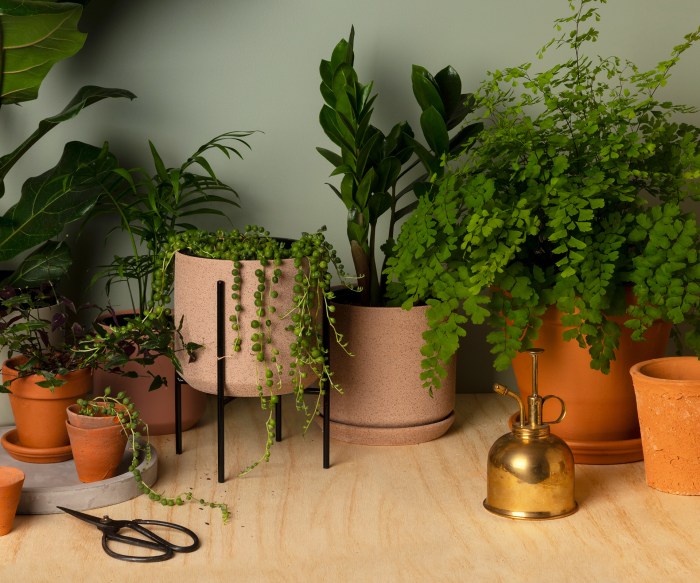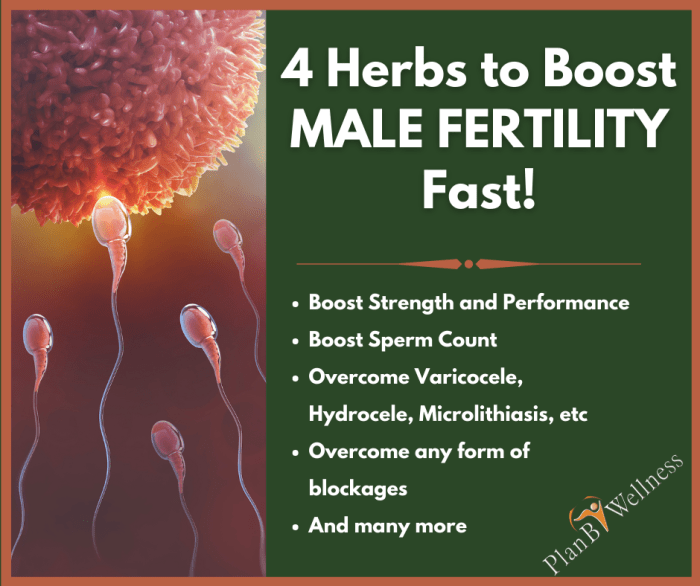Discover the best plants for men, a selection of low-maintenance, air-purifying, and aesthetically pleasing greenery tailored to suit masculine lifestyles and preferences. From hardy outdoor plants to space-saving indoor options, find the perfect plant to complement your home and enhance your well-being.
Popular Houseplants for Men: Best Plants For Men

With an increasing interest in home décor and well-being, men are embracing the aesthetic and therapeutic benefits of houseplants. Certain species stand out as particularly well-suited to men’s lifestyles and preferences, offering low maintenance, air purification, and striking visual appeal.
Here are some of the most popular houseplants for men:
Snake Plant
- Known for its architectural form and resilience, the snake plant is an ideal choice for busy men. It requires minimal watering and can tolerate low light conditions.
- In addition to its aesthetic appeal, it’s a natural air purifier, removing toxins like formaldehyde and benzene from the air.
ZZ Plant
- Another low-maintenance option, the ZZ plant is highly tolerant of neglect. It can survive long periods without water and thrives in low light.
- Its glossy, dark green leaves add a touch of sophistication to any room.
Pothos, Best plants for men
- Pothos is a versatile vine that can be grown in hanging baskets or on shelves. Its trailing stems and heart-shaped leaves create a lush, cascading effect.
- It’s a great air purifier and can help reduce stress levels.
Spider Plant
- The spider plant is a fast-growing, easy-to-care-for plant that produces long, arching leaves. It’s a natural air purifier and is said to improve sleep quality.
- Its trailing babies, or spiderettes, add a playful touch to any space.
Peace Lily
- Known for its elegant white blooms, the peace lily is a low-maintenance plant that prefers indirect light. It’s a natural humidifier and can help improve air quality.
- Its lush, dark green leaves add a touch of tropical flair to any room.
Plants for Offices and Workspaces

Incorporating plants into offices and workspaces has gained popularity due to their positive impact on air quality, stress reduction, and productivity. Here’s a comprehensive guide to choosing the ideal plants for your professional environment:
Ideal Plants for Offices and Workspaces
| Plant Name | Benefits | Maintenance Level | Ideal Location |
|---|---|---|---|
| Snake Plant | Purifies air, reduces stress | Low | Bright, indirect light |
| Peace Lily | Improves air quality, boosts mood | Moderate | Partial shade to bright, indirect light |
| ZZ Plant | Tolerant to neglect, purifies air | Very low | Low to bright, indirect light |
| Pothos | Enhances air quality, reduces stress | Low | Bright, indirect light to low light |
| Spider Plant | Purifies air, produces oxygen | Low | Bright, indirect light to partial shade |
Plants for Apartments and Small Spaces

Living in an apartment or a small space doesn’t mean you have to miss out on the benefits of having plants. There are plenty of plants that are well-suited for these environments, and they can bring a touch of nature and life to your home.
If you’re looking for the best plants for your raised bed garden, you’ll want to choose varieties that are well-suited to the climate and soil conditions in your area. Some of the best plants for raised bed gardens include tomatoes, peppers, cucumbers, squash, and herbs.
You can also grow flowers in your raised bed garden, but be sure to choose varieties that are known for their ability to attract pollinators. When selecting plants for your raised bed garden, be sure to consider the size of the plants and the amount of space you have available.
You’ll also want to choose plants that are compatible with each other and that will complement the overall design of your garden. For more information on the best plants for raised bed gardens, visit this website . The right plants will help you create a beautiful and productive raised bed garden that you can enjoy for years to come.
Additionally, certain plants are known to be particularly beneficial for men’s health, such as saw palmetto and stinging nettle.
When choosing plants for an apartment or small space, it’s important to consider the size of the plant, its light requirements, and any special care instructions. You’ll also want to choose plants that are easy to care for, as you may not have a lot of time to spend on maintenance.
Among the popular choices for best plants for men, many thrive in low-light conditions. If you’re looking to bring some greenery into your bathroom without a window, consider plants that can tolerate these conditions. Visit best plants for bathroom without window for a list of suitable options.
These plants will add a touch of nature to your bathroom while purifying the air and boosting your mood.
Benefits of Having Plants in Small Spaces
In addition to adding a touch of beauty to your home, plants can also provide a number of benefits for your health and well-being. Studies have shown that plants can help to improve air quality, reduce stress, and boost creativity.
If you’re looking for a way to add some life to your small space, consider adding a few plants. They’re a great way to improve your air quality, reduce stress, and boost your creativity.
Plants for Apartments and Small Spaces
- Snake plant: Snake plants are one of the most popular houseplants because they are very easy to care for. They can tolerate low light conditions and don’t need to be watered very often.
- ZZ plant: ZZ plants are another low-maintenance option that is perfect for small spaces. They can tolerate low light conditions and don’t need to be watered very often.
- Peace lily: Peace lilies are a beautiful plant that can add a touch of elegance to any space. They prefer bright, indirect light and need to be watered regularly.
- Pothos: Pothos is a vine that is perfect for hanging baskets or trailing down shelves. It is very easy to care for and can tolerate low light conditions.
- Spider plant: Spider plants are a popular choice for small spaces because they are very easy to care for. They can tolerate low light conditions and don’t need to be watered very often.
Plants for Outdoor Spaces

Adding greenery to outdoor spaces can create a welcoming and relaxing atmosphere. Whether you have a patio, balcony, or garden, there are many plants that can thrive in these environments. Here’s a guide to some of the best plants for outdoor spaces:
Hardiness Zones
When choosing plants for outdoor spaces, it’s important to consider your hardiness zone. This refers to the average minimum temperature in your area. Plants that are not hardy in your zone may not survive the winter.
- Zone 3-4:Hardy to -30 to -20 degrees Fahrenheit. Examples: Japanese maple, hydrangea, hosta.
- Zone 5-6:Hardy to -20 to -10 degrees Fahrenheit. Examples: Rose of Sharon, butterfly bush, daylily.
- Zone 7-8:Hardy to -10 to 10 degrees Fahrenheit. Examples: Crape myrtle, hibiscus, lantana.
- Zone 9-10:Hardy to 10 to 30 degrees Fahrenheit. Examples: Palm trees, bougainvillea, citrus trees.
Sunlight Requirements
Another important factor to consider is the amount of sunlight your outdoor space receives. Some plants prefer full sun, while others can tolerate shade.
Men seeking to enhance their living spaces with greenery can opt for plants known for their air-purifying abilities, such as the Snake Plant or Peace Lily. Alternatively, for those interested in experimenting with hydroponics, a method of growing plants in nutrient-rich water, hydroponic-friendly plants like Basil, Lettuce, or Tomatoes offer a unique and rewarding experience.
These plants not only thrive in this controlled environment but also provide a fresh and healthy harvest.
- Full sun:At least 6 hours of direct sunlight per day. Examples: Marigolds, zinnias, sunflowers.
- Partial shade:2-6 hours of direct sunlight per day. Examples: Impatiens, begonias, ferns.
- Full shade:Less than 2 hours of direct sunlight per day. Examples: Hosta, coral bells, astilbe.
Specific Care Needs
In addition to hardiness and sunlight requirements, some plants may have specific care needs. For example, some plants may need to be watered more frequently than others, or they may need to be fertilized regularly.
It’s important to research the specific care needs of any plant you’re considering before purchasing it. This will help you ensure that the plant will thrive in your outdoor space.
Aesthetic Appeal
In addition to their practical benefits, plants can also add aesthetic appeal to your outdoor space. Choose plants that complement the style of your home and that create a welcoming atmosphere.
For example, flowering plants can add a splash of color to your patio or balcony, while evergreens can provide year-round interest. Plants with different textures and sizes can also create a more visually appealing space.
Benefits of Incorporating Plants into Outdoor Living Areas
There are many benefits to incorporating plants into your outdoor living areas. Plants can:
- Create a more inviting and relaxing atmosphere
- Provide privacy
- Reduce noise pollution
- Improve air quality
- Attract wildlife
Unique and Unusual Plants
In the realm of indoor gardening, the pursuit of the extraordinary often leads to the discovery of unique and unusual plants that captivate the imagination. These botanical marvels defy expectations, boasting captivating forms, striking colors, and intriguing textures. Whether adorning a living room, office, or outdoor space, these conversation-starting plants are sure to add a touch of intrigue and botanical wonder.
From plants that mimic living creatures to those that glow in the dark, the world of unique and unusual plants is a treasure trove of horticultural delights. Here’s a curated collection of these extraordinary specimens, each with its distinct characteristics and captivating charm.
The Mimosa Pudica: The Touch-Me-Not Plant
The Mimosa pudica, also known as the touch-me-not plant, is a fascinating botanical oddity that responds to touch with remarkable sensitivity. When its delicate leaves are brushed against, they fold inward and droop, creating a dramatic display. This unique defensive mechanism, known as seismonastic movement, protects the plant from potential threats by making it appear wilted and unappetizing to predators.
Caring for the Mimosa pudica is relatively straightforward. It prefers bright, indirect light and moist, well-draining soil. Regular watering is essential, but avoid overwatering, as this can lead to root rot. Fertilize the plant monthly during the growing season to promote healthy growth and abundant foliage.
The Mimosa pudica is a captivating conversation piece that is sure to amaze and delight. Its unique ability to respond to touch makes it an ideal plant for children and adults alike, fostering a sense of wonder and curiosity about the natural world.
Conclusive Thoughts
Whether you’re a seasoned plant enthusiast or a novice seeking to add a touch of nature to your living space, this guide to the best plants for men offers a wealth of options to suit your needs. Embrace the benefits of greenery and enjoy the aesthetic appeal, improved air quality, and increased well-being that plants bring.
FAQ Insights
What are the most popular houseplants for men?
Snake plants, ZZ plants, and pothos are among the most popular houseplants for men due to their low maintenance and air-purifying qualities.
What plants are best for offices and workspaces?
Spider plants, peace lilies, and succulents are ideal for offices as they improve air quality, reduce stress, and enhance productivity.
What plants are suitable for apartments and small spaces?
Consider air plants, succulents, and ferns for apartments and small spaces as they require minimal space and care.
What are some unique and unusual plants for men?
Venus flytraps, pitcher plants, and carnivorous sundews offer a touch of intrigue and conversation-starting potential.